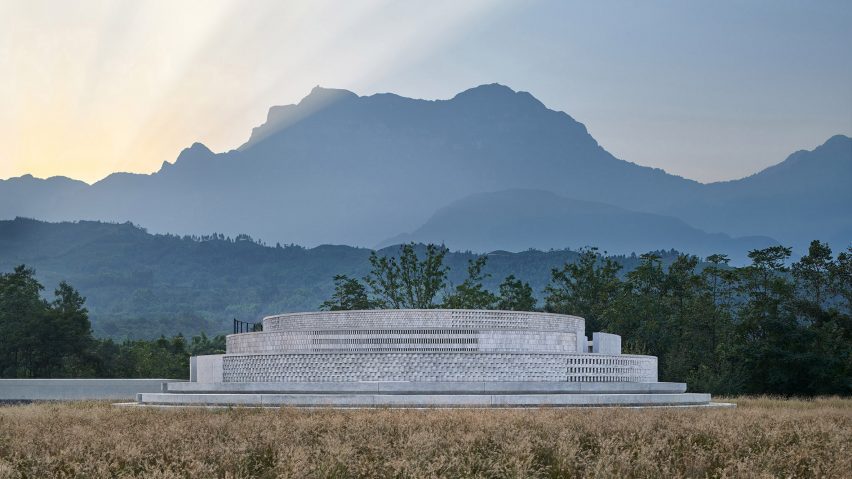
Five key projects by architect and Dezeen Awards China judge Rossana Hu
Shanghai-based architect Rossana Hu has joined Dezeen Awards China 2023 as a judge. Here she selects five projects that best reflect her work.
Hu founded Neri&Hu Design and Research Office along with Lyndon Neri in 2004 and since the practice has established itself as one of the best-known in China.
Speaking to Dezeen, Hu quoted French writer Antoine de Saint-Exupéry – "we don't ask to be eternal beings, but we ask that things do not lose all their meaning" – to best describes her design and life philosophy.
"I believe in architecture and design as powerful cultural forces," explained Hu. "The functional aspects are less interesting for us, although as professionals that's the prerequisite – your design must work on a very practical level. I believe in the subtext over the obvious and the poetic over the utilitarian."
Currently Hu is working on a number of projects all over the world, ranging from housing to cultural and hospitality projects. She is also preparing the launch of Festival of Design 2023 – a week-long design festival in Shanghai that celebrates the creativity of the city.
Rossana Hu among Dezeen Awards China 2023 judges
Dezeen Awards China 2023 launched on 8 June in partnership with Bentley Motors. It is the first regional edition of Dezeen Awards, celebrating the best architecture, interiors and design in China.
Yesterday we announced the latest Dezeen Awards China judges, including interior designer Ilse Crawford, industrial designers Min Chen and Michael Young, Design Shanghai director Zhuo Tan, as well as architect Ting Yu, who will be joining Hu on the architecture judging panel.
Entries close on Thursday 24 August. Submit your entry before midnight Beijing time on 24 August to avoid late entry fees.
Read on to find Hu's views on the five projects that best represent her work:
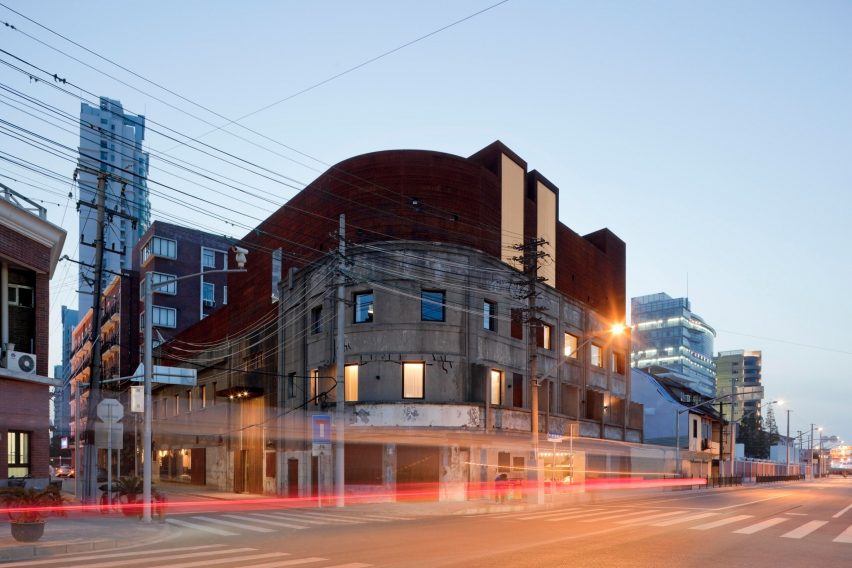
Waterhouse at South Bund, Shanghai, 2o10
"This project questions the typology of a hotel – how one interprets notions of 'home' and domesticity in a foreign environment, and how to give meaning to the experience of a traveller. In response to adapting the original structure, a Japanese army building from the 1930s, we exercised restraint in the restoration process by resisting the impulse to cosmetically fix every flaw.
"We intentionally left portions of walls crude and exposed, at times even encasing raw wall sections and details behind a glass shield to convey the archival treatment of a museum display.
"Drawing from the rich experience of a typical Shanghai longtang alley where true privacy does not exist, we challenge conventions of inhabitation, notions of comfort and the boundaries between public and private."
Read more about Waterhouse at South Bund ›
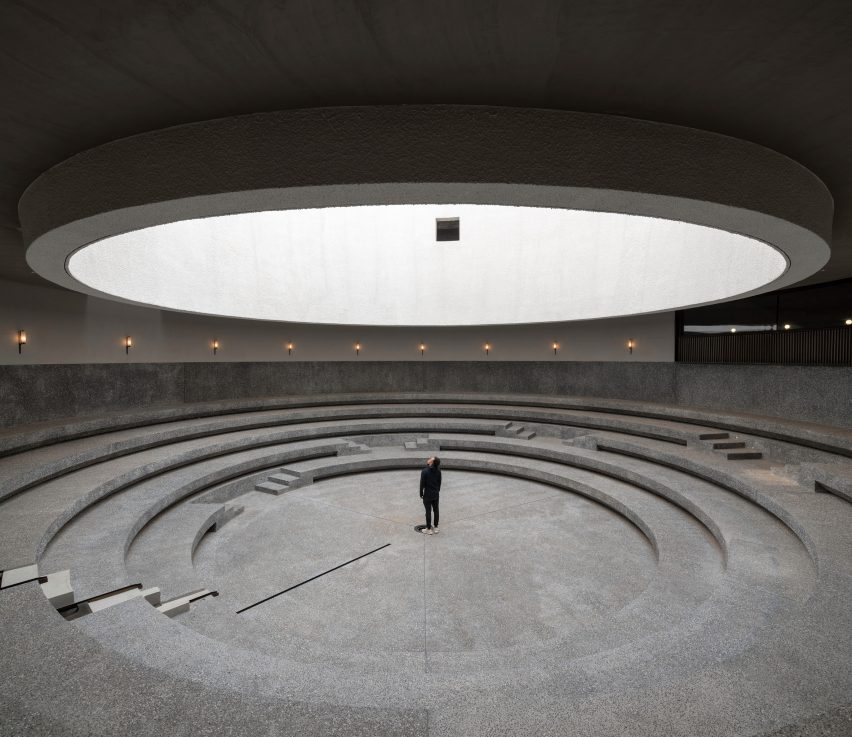
Aranya Art Center, Qinhuangdao, 2019
"Working with the notion of genius loci or 'spirit of place', we turned to geography, climate, light, and tectonic form to create a dialogue with the environment at large. Drawing inspiration from the seasonal ocean waters nearby, the design attempts to encapsulate the natural wonder of water at its core.
"Through this project, we seized an opportunity to question the notion of an art space versus a communal space. The building's fortress-like exterior conceals a central void space, which can be reconfigured for various functions: a pool feature when filled with water, but also a performance and gathering platform when drained.
"The facade's expression and materiality are heavy in nature, referencing the heavier tectonic forms of architecture in northern China; the building resembles a solid rock sitting firmly in the shifting environment. The building is transformed each evening as light emanates from within, turning the rock-like body into a glimmering jewel."
Read more about Aranya Art Center ›
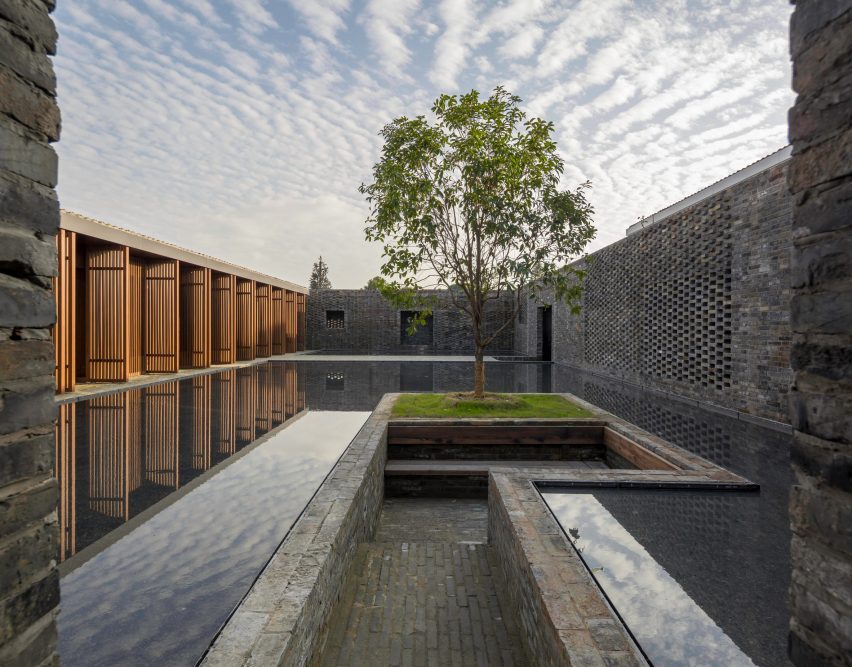
Tsingpu Yangzhou Retreat, Yangzhou, 2019
"Addressing a scenic site dotted with small lakes and a handful of existing ruinous structures, we overlaid a grid of narrow walled lanes as pathways to integrate otherwise incoherent programs and spaces. The resulting organisation creates multiple courtyard enclosures as a modern reinterpretation of the vernacular Chinese courtyard and uses an orthogonal landscape strategy that questions the traditional Chinese garden's artificial representation of nature.
"Within the walls, which are constructed entirely with reclaimed grey bricks, several courtyards were occupied as guest rooms and shared amenities, while others are left unoccupied, serving as pockets of lush gardens."
Read more about Tsingpu Yangzhou Retreat ›
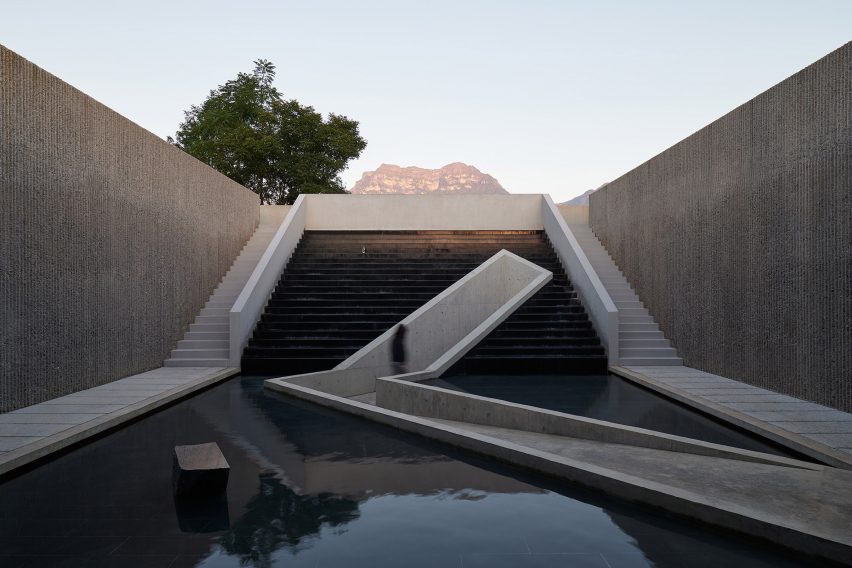
The Chuan Malt Whisky Distillery, Mount Emei, 2021
"While built remnants of the past no longer remain, the very emptiness of the project site on Mount Emei is powerfully suggestive of all of its fabled memories. In this context, we designed a distillery that is home to China's first whisky.
"The surroundings of this project exemplify the Chinese notion of the duality of nature, where two opposing yet complementary forces, 'shan' and 'shui', make up the world we live in.
"With humility, the architecture offers a balanced duality in many ways, with the industrial buildings as a modern interpretation of vernacular Chinese architecture, and the visitor buildings as elemental geometries grounded in the terrain.
"The project is also an embodiment of the refined sense of artistry embedded in whisky-making and blending, which is in dialogue with traditional Chinese craftsmanship and knowledge of materials."
Read more about Chuan Malt Whisky Distillery ›

Nantou City Guesthouse, Shenzhen, 2022
"A village cocooned within the hustle and bustle of Shenzhen compelled us to rethink the notion of interiority across scales in a city, among densely populated buildings, as well as within a single structure.
"In this project, we devised several ways to shift, overlap, and blur the boundaries of inside and outside to celebrate the vibrant energy and everyday objects in the streets.
"The existing stairwell was cut open and expanded to create a new vertical courtyard, inviting the urban alleyway and natural elements into the heart of the building. A new lightweight, meandering stair serves both as an architectural promenade and as a social space, where chance encounters take place. The project's urban nature is further intensified by the celebration of ruins, such as existing raw concrete structures and traces of former tenement occupation."
Read more about Nantou City Guesthouse ›
Dezeen Awards China 2023
Dezeen Awards China is the first regional edition of Dezeen Awards, to celebrate the best architecture, interiors and design in China. The annual awards are in partnership with Bentley Motors, as part of a wider collaboration that will see the brand work with Dezeen to support and inspire the next generation of design talent.

